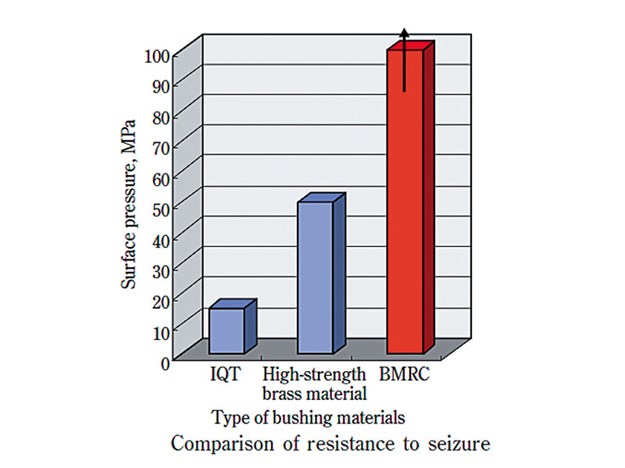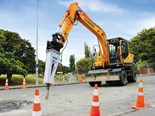Komatsu loaders scale accuracy
Komatsu wheel loaders achieve high accuracy and consistent results when fitted with third-party load scales
-(1).jpg) |
|
Komatsu says their wheel loaders fitted with these third-party scales are now consistently achieving levels of accuracy
|
Over the past four years, Komatsu New Zealand’s product support and technical teams have been working with customers and suppliers to ensure Komatsu wheel loaders achieve high accuracy and consistent results when fitted with third-party load scales.
As a result of an ongoing programme of research, testing, and many hours of trials, Komatsu says their wheel loaders fitted with these third-party scales are now consistently achieving levels of accuracy that are significantly better than other equipment brands; Komatsu loaders are consistently achieving 0.5% accuracy or better.
Due to regulations covering on-road trucks, sites that do not have a certified weighbridge should have their wheel loaders equipped with "legal for trade" load scales, which require annual calibration to maintain their certification. Generally, they are required to achieve load accuracies of one percent (or better in some cases).
Accurate readings
.jpg)
Komatsu’s programme was led by Brent Hepple, Komatsu NZ’s product support manager, who’d had several requests to ensure Komatsu loaders could achieve exceptionally accurate readings with load scales; the concern was the company could lose sales in significant numbers to quarries and mineral processing operations if this wasn’t achievable.
"Inaccurate or inconsistent load scale results are particularly critical in operations where there’s no weighbridge, so the weight of material in each bucket load must be spot on," says Brent.
"If your operation is relying on a loader fitted with scales to ensure your trucks are not overloaded, then each bucket load weight is critical. "We have customers who want their trucks loaded to exactly 30 tonnes to optimise their haulage operations. But if their trucks are even slightly overloaded, they’ll get a ticket."
Another important customer sector reliant on highly accurate scale results is the lime industry. "Lime blends have to have very precise mixes to meet their customer specifications. If there’s too much of a lower quality mix, customers aren’t getting what they’ve paid for. If there’s too much of the premium product, the producers are losing money."
Brent, along with Ron Chilton, Komatsu NZ’s technical support representative for the South Island, spent a lot of time working with customers to try to solve these issues and also to figure out why they seemed to be unique to Komatsu loaders and didn’t as a rule happen with other brands.
Working with suppliers
 |
|
Type of bushing materials Comparison of resistance to seizure |
Brent and Ron—who Brent credits as having done the bulk of the work with customers and suppliers—also worked closely with the two leading load scale suppliers in New Zealand, Loadrite and RDS.
As it turned out, there were two areas to focus on, and each interacted with each other to prevent Komatsu achieving the highly accurate and consistent results required.
"Fairly early on, we identified that friction in the loader bucket bushing was part of the issue," says Brent. "Over a number of years, we tried a number of different low-friction bushings.
They gave us some encouraging results, but they still weren’t giving us the accuracy we needed.
"Then we stumbled on something in a Komatsu excavator parts book that referred to a BMRC bush, which is a special sintered aluminium/copper bush fitted to some models of Komatsu excavators so they could raise greasing intervals to more than 500 hours.
"We tried some of these and found the accuracy was significantly improved.
"Loader scales work on hydraulic pressure to calculate load weights, and the slightest increase in friction in the bushings meant more pressure in the hydraulic system, which in turn meant the scales gave an incorrect reading."
Brent and his team brought in some sets of BMRC bushes from Komatsu Japan and trialled them on some loaders in a couple of operations. While these addressed some of the issues, the consistency required still wasn’t there, so Brent and the team did some more research.
"We started looking at the Closed-Centre Load Sensing System or CLSS hydraulic system that’s been used on just about all Komatsu construction machines since the late 1990s."
.jpg) |
|
Adjusting Komatsu’s CLSS hydraulic systems helped in getting accuracies of 0.5% consistently
|
It’s pretty much unique to Komatsu, and something no other manufacturers use, certainly not on loaders; most hydraulics on other earthmoving brands are open-centre systems.
"Our CLSS gives us significant advantages in precision and control, it’s faster, and more reliable and robust, plus it also contributes to Komatsu machines’ reputation for excellent fuel efficiency," says Brent.
"So we started adjusting the loader hydraulic circuits on these loaders that we’d fitted with the new bushes, using data logging to measure and calibrate the hydraulic systems’ wave pattern.
"These wave patterns are used by the load scales to calculate bucketload weights. "We found we were able to adjust our Komatsu CLSS hydraulic systems to get the wave patterns in precisely the right spot.
"By doing this, we were able to get to accuracies of 0.5% consistently with Komatsu loaders, which is even better than the scale manufacturers can guarantee," he says.
"So the solution turned out to be the combination of these ultra-low-friction bushes and the calibration of our hydraulic systems.
"As with all loaders fitted with load scales that are used for sales and truck loading work, our hydraulic systems do need regular calibration and checking to maintain accuracy," says Brent.
"But we are now finding as a result of our research that Komatsu machines as they get older actually get even more accurate in measuring bucket load weights, as things wear a bit and there’s a touch less friction," he says.
New standard fitment
.jpg) |
|
BMRC ultra-low-friction bushes are now a standard fitment in all Komatsu loaders in the WA380 to WA480 size range sold in NZ and Australia
|
As a result of this programme, all Komatsu loaders in the WA380 to WA480 size range sold in New Zealand and Australia are now fitted with BMRC ultra-low-friction bushes as a standard fitment.
"We also think that Komatsu will be very well positioned into the future, as aftermarket load scales are getting more and more accurate, with increased levels of sensitivity," says Brent.
"Now that we know exactly how to set up and calibrate our loaders to get the best possible results, we believe we have a significant advantage over other suppliers."
Brent also acknowledged the assistance provided by load scale suppliers Loadrite, which started in New Zealand and still carries out the bulk of its research and manufacturing in the country, and RDS.
"Loadrite has the larger market share in New Zealand, while I believe RDS is more prevalent in Australia," he says. "We were having these issues with both brands, and both were very helpful in assisting us to resolve them.
"Thanks to our Komatsu NZ team, along with engineering support from Komatsu Australia and Japan, plus the input from load scale suppliers and customers, we have solved this issue," says Brent.
 |
|
Komatsu says they’ve had this solution since the start of 2019, and it’s proven itself in that time
|
"We’ve had this solution since the start of 2019, and it’s proven itself in that time. We’re now highly confident in our ability to supply loaders that consistently deliver load scale accuracies that significantly exceed industry requirements."
For more information, visit komatsu.co.nz.
Find excavators for sale in NZ
Keep up to date in the industry by signing up to Deals on Wheels' free newsletter or liking us on Facebook.


.jpg)
.gif)

.jpg)
.jpg)

